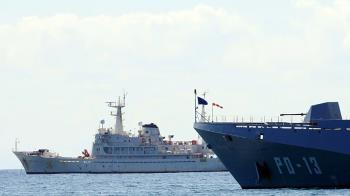Alwaght- Iran is celebrating its Islamic Resolution's 43rd anniversary as during over four decades it was exposed to all kinds of pressures, threats, sanctions, wars, and media propaganda only to come out stronger. After all these years, the movement started by Iman Khomeini and people not only has not stopped but also the world now sees it pressing forward powerfully as an influential actor on the world stage.
Iran revolution's nature and difference from other world revolutions
One of the most important issues about the Islamic Revolution of Iran since its victory in February 1979 is its different nature compared to similar movements around the globe in 19th and 20th centuries.
Politically speaking, a majority of the pro-independence and democracy movements in the 20th century, especially its second half, were under influence of an East-West competition, and thus were inspired by either Marxism of the Soviet bloc or the liberalism of the West. This struggle was a key and determining factor in many of the popular movements even in non-Western countries or what once labeled Third World nations.
On the other hand, the prevailing thinking in Western ideologies emphasized secularism and the separation of religion from politics. As a result, the civilizational and cultural roots of Eastern countries that are deep in religion of these societies, were ignored. This went even worse when Western-led globalization project devoured the local and non-capitalist cultures of the East and stirred the still-reverberating identity crisis.
Meanwhile, the Islamic revolution, with the nature of justice, democracy, reviving the religion and spirituality to social and political life and led by a great religious leader, offered a new breathing space and a new discourse to the world.
From another aspect, contrary to pro-independence movements in the Third World countries which went through transformation and then destruction when facing threats, pressures, and influence of the superpowers or fell back under dictatorship with the people driven out of the politics, the Iranian revolution maintained its pro-independence and anti-imperialist principles and cut off the role of the superpowers from the decision-making process and brought about democracy and transition of power by elections.
Islamic Revolution and formation of geopolitics of resistance
In addition to ideological and cultural changes, the victory of the Islamic Revolution caused changes in the geopolitical dimension and global developments and competition in security and economy, especially in the strategic regions of West Asia and North Africa, which have been the bottleneck of global powers' competition and presence for decades.
Regionally speaking, before the Islamic Revolution, Iran, which was known the gendarm of the region for its close relations with the West and specifically the US and the main leverage for the promotion of the security strategy and economic interests of Western powers in the Persian Gulf, did not have much regional influence. Following the victory of the Iranian revolution, which carried the message of supporting the oppressed nations and the confrontation of the overbearing foreign powers' domination over regional countries, the regional security architecture underwent changes, and after four decades, the Iran-led Axis of Resistance is now the leading influential power in regional developments.
Internationally, the Iranian conditions are incomparable to the pre-revolution period. Under the Islamic Republic, Iran has held the essential role in neutralizing the American colonialist strategies in West Asia and the Persian Gulf over the past four decades and this stood as a catalyst accelerating the end of Western-dominated unilpolar world order and discrediting the Western-promoted end of history theory. Unquestionably, Iran is one pillar of the regional developments and transition to new world order beside other pillars China and Russia.
Moving beyond thought of foreign threats
Very important aspect of the 1979 revolution and the years following it has been the national security. Iran is an anchor of stability in the region while many regional states are struggling with tumultuous conditions.
A look at the regional states gives us the notion that the national security can neither be bought via submission and ransom as do Arab states nor with reliance on massive military spending and arms purchases.
Before the Islamic Revolution, Iran was one of the largest buyers of the world's military industry and a prolific customer of Western military weapons, generating huge annual revenues for Western companies. Now, in the fourth decade of its revolution, it not only provides all the strategic military needs to its armed forces but also in the leading areas of technology such as missile, space, and drone is a global-scale heavyweight, sitting shoulder to shoulder with other powers in these technologies– something making foreign threats the least concern of the Iranian national security.



























